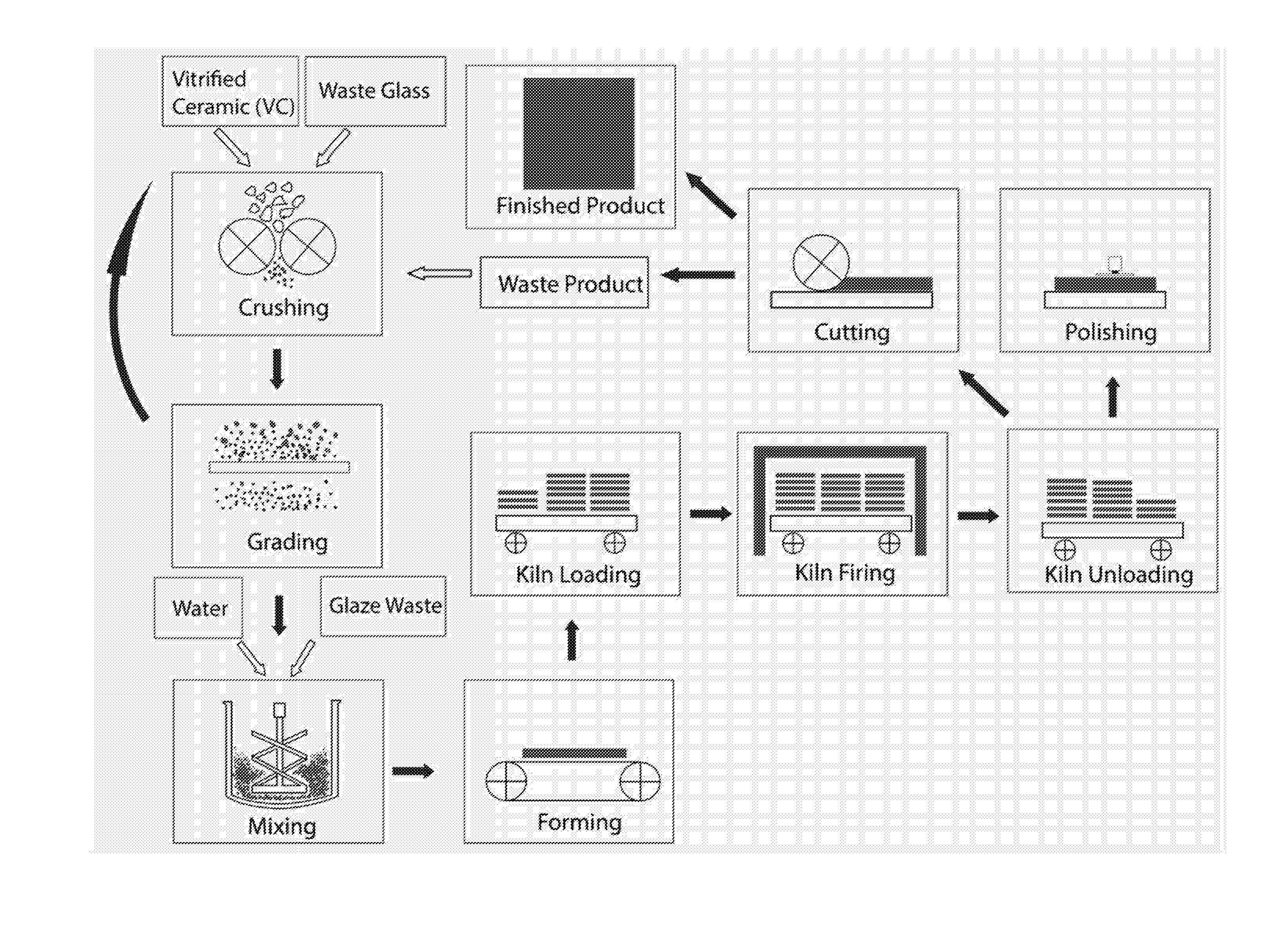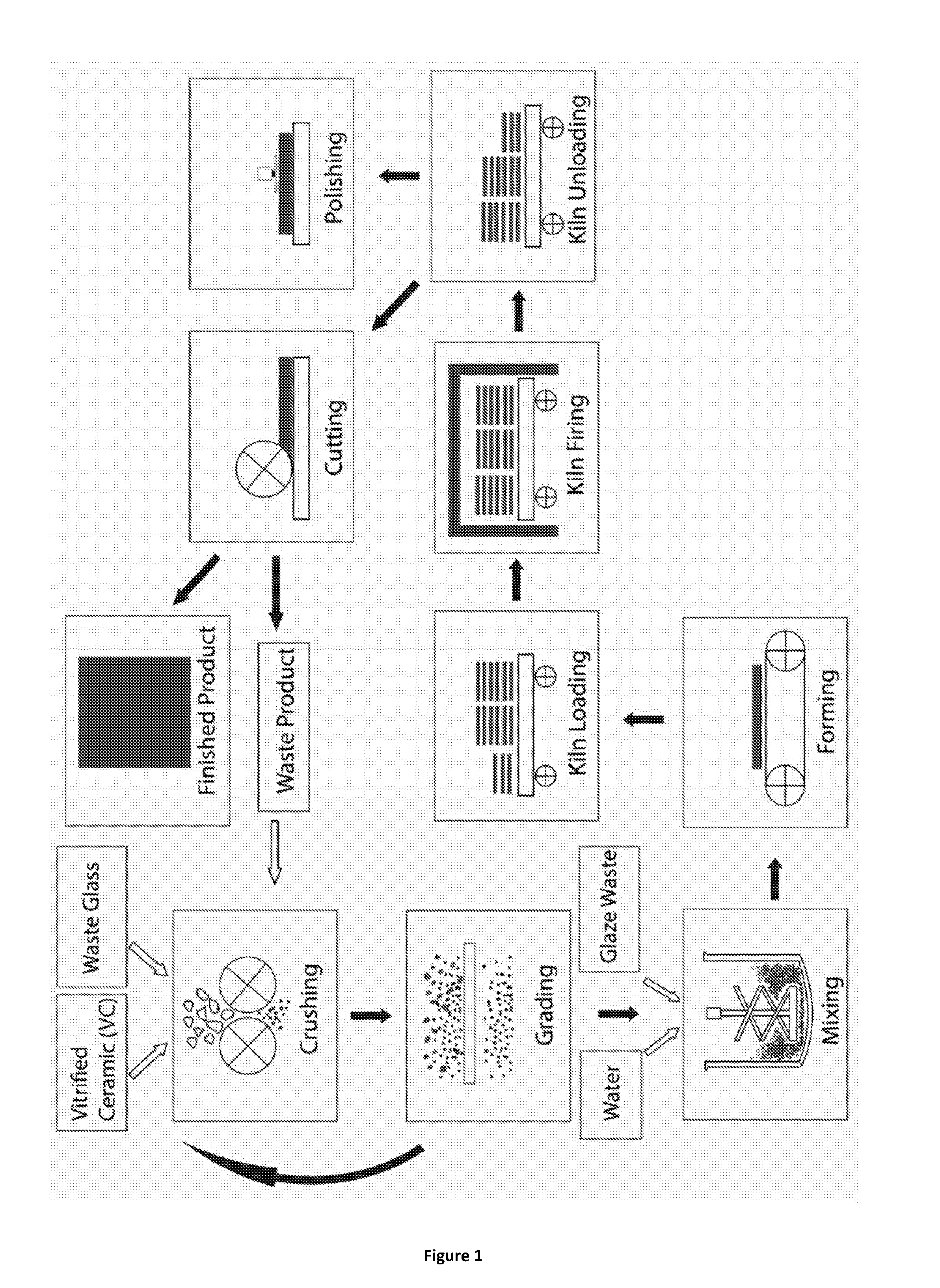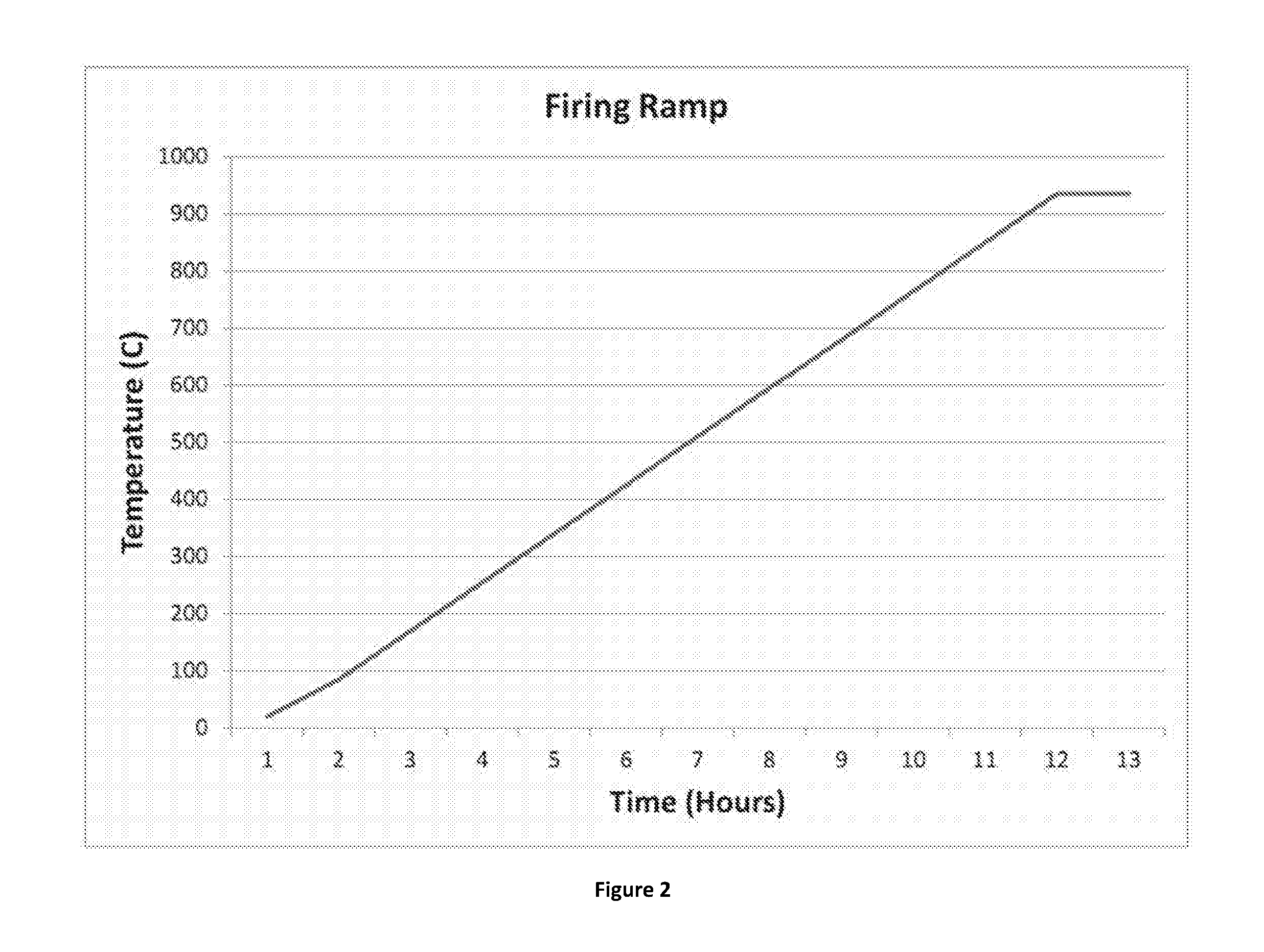Composite material
a technology of composite materials and materials, applied in the field of composite materials, can solve the problems of difficult recycling of corian® and silestone® composites, and achieve the effects of reducing manufacturing times, reducing costs and energy burden, and saving energy
- Summary
- Abstract
- Description
- Claims
- Application Information
AI Technical Summary
Benefits of technology
Problems solved by technology
Method used
Image
Examples
example 1
[0269]In a particular example, sheets were made to the following dimensions from a composite material:[0270]30×30×2.5 cm cladding tiles[0271]50×50×1.25 cm wall tiles[0272]75×50×4.5 cm worktop
[0273]The composite material of each of the three abovementioned sheets consisted of:[0274]˜50 wt % particulate household glass waste (i.e. crushed used bottles / jars);[0275]˜40 wt % particulate industrial ceramic waste (crushed waste sanitary ware obtained from Armitage Shanks™)[0276]˜10 wt % particular ceramic glaze (crushed glaze from vitrified sanitary ware obtained from earthenware or the tile industry)[0277]˜1 wt % pigment metal oxide[0278](amounts suitably adjusted so that all totals 100 wt %)
[0279]This equates to 100% waste materials (excluding the pigment).
[0280]The composite material was made according to the process described schematically in FIG. 1. Firstly, vitrified ceramic and glass was separately crushed in a laboratory crusher (Retch BB200). Two passes through the crusher produce...
example 2
[0295]Further tests were carried out upon sheets of composite material made in accordance with the invention, both with and without a lead content (i.e. in this example, lead oxide).
[0296]Sheets of composite material were made consisting of the same ingredients set out in Example 1, except that the glass component was varied between cathode ray tube glass (CRT glass with 25% w / w lead oxide) and the glass of Example 1 (i.e. particulate household glass waste):[0297]50 wt % glass component (varied for the tests);[0298]40 wt % particulate industrial ceramic waste (crushed waste sanitary ware / obtained from Armitage Shanks™)[0299]10 wt % particular ceramic glaze (crushed glaze from sanitary ware, earthenware, or tiles)[0300]1 wt % pigment metal oxide
[0301]In the present example, sheets, which were fashioned as 50×50×1.25 cm wall tiles, were produced in accordance with the process of Example 1, with the same particle sizes and blending protocols. Heating protocols were the same, except tha...
example 3
[0306]In a particular example, sheets were made to the following general dimensions from a composite material:[0307]30×30×2.5 cm cladding tiles[0308]50×50×1.25 cm wall tiles[0309]75×50×4.5 cm worktop
[0310]The composite material of each of the three abovementioned sheets consisted of:[0311]˜50 wt % particulate household glass waste (i.e. crushed used bottles / jars);[0312]˜40 wt % particulate industrial ceramic waste (crushed waste sanitary ware obtained from Armitage Shanks™)[0313]˜10 wt % particular ceramic glaze (crushed glaze from vitrified sanitary ware obtained from earthenware or the tile industry)[0314]˜1 wt % pigment metal oxide[0315](amounts suitably adjusted so that all totals 100 wt %)
[0316]This equates to 100% waste materials (excluding the pigment).
[0317]The composite material was made according to the process described in Example 1 (and FIG. 1), except that when the blended mixture is pressed and moulded into a desired shape, additional large particles (e.g. stones of at...
PUM
| Property | Measurement | Unit |
|---|---|---|
| wt % | aaaaa | aaaaa |
| wt % | aaaaa | aaaaa |
| wt % | aaaaa | aaaaa |
Abstract
Description
Claims
Application Information
 Login to View More
Login to View More - R&D
- Intellectual Property
- Life Sciences
- Materials
- Tech Scout
- Unparalleled Data Quality
- Higher Quality Content
- 60% Fewer Hallucinations
Browse by: Latest US Patents, China's latest patents, Technical Efficacy Thesaurus, Application Domain, Technology Topic, Popular Technical Reports.
© 2025 PatSnap. All rights reserved.Legal|Privacy policy|Modern Slavery Act Transparency Statement|Sitemap|About US| Contact US: help@patsnap.com



